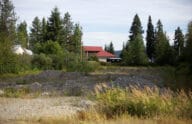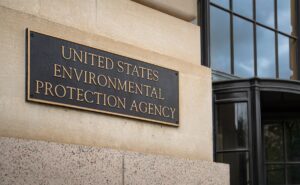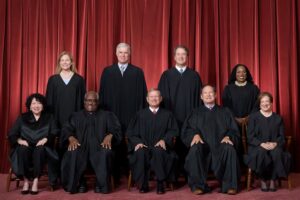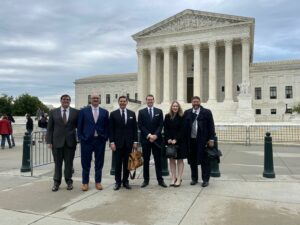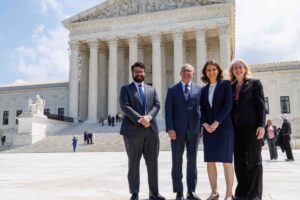PLF’s relentless 50-Year fight to protect individuals from EPA’s ambiguity
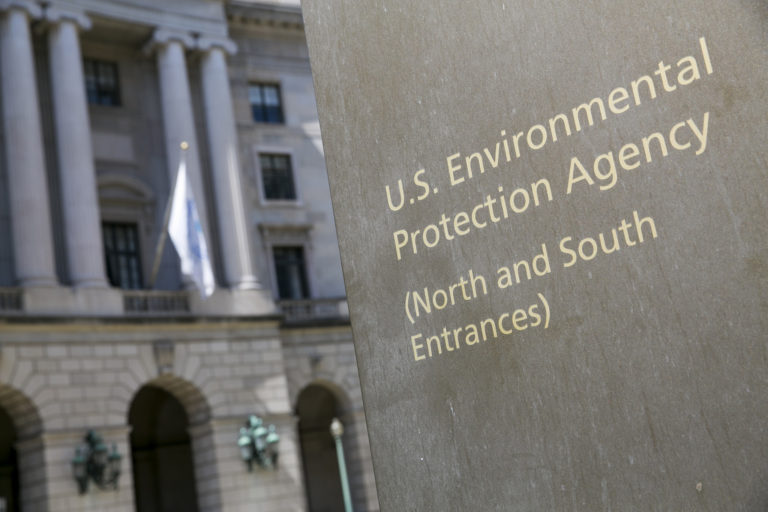
On October 18, 1972, Congress enacted into law the Clean Water Act (CWA), giving the federal government authority to regulate pollution and quality standards for the “waters of the United States.” On March 5, 1973—just over four months later—Pacific Legal Foundation (PLF) became the first public interest legal organization dedicated to protecting individual liberty.
The CWA’s charge to protect the nation’s waters from pollution is an important priority. So too is ensuring individuals retain the right to use their private property as they see fit.
These two priorities are often in tension. Agencies such as the U.S. Army Corps of Engineers, or more often the Environmental Protection Agency (EPA), took a maximalist approach, over time seeking to “protect” any land that might sometimes look wet if you squinted hard enough—property owners be damned. This is precisely why PLF was founded: because government agents backed with seemingly unlimited resources, wide-ranging power, and little regard for tradeoffs can push the little guy around, and someone needed to stand up for the little guy.
Thus began a joust between PLF and various government enforcers of the Clean Water Act that has gone on for 50 years and counting.
The early years
Candidly, the early years of battle didn’t go so well for PLF or for the cause of liberty.
We originally focused part of our ire on a section of the CWA dealing with ambiguities in discharge permitting. In 1978, this led to a victorious judgment against the EPA in our first major CWA case before the Ninth Circuit Court of Appeals. However, the EPA appealed, setting up our first fight in the halls of the U.S. Supreme Court a year later—and the EPA prevailed. Undeterred, PLF pressed on.
In the mid-’80s, PLF even opened an office in Alaska to litigate closer to the source of some of the government’s abuse. Many of PLF’s cases, especially in the early years, were losses as we were still developing our expertise in strategic litigation. Some were particularly tragic: In 1986, Ocie and Carey Mills spent 18 months in federal prison for spreading clean sand on a dry lot near Pensacola to build a fishing cabin on ground the feds claimed was a wetland—which a judge in 1993 determined never was!
But eventually, the tide began to turn.
There are many facets of the Clean Water Act, but the ones PLF came to view as the greatest threats to liberty concerned simple definitions: What are “waters of the United States”? Must they be navigable bodies of water? Do they include wetlands? How expansive is the definition of wetlands?
In an affront to all but a surprise to no one, the government’s position—absent court rulings to the contrary—was that the definitions are “whatever we say they are.”
In 2006, PLF brought this very issue before the U.S. Supreme Court in our second heavyweight bout with the EPA (and our fifth Supreme Court appearance overall). PLF represented a Michigan property developer who pulled up some trees on his property and was ensnared when regulators claimed an adjacent drainage ditch qualified his whole property as a wetland. PLF’s aim was to finally get a clear and sensible definition of “waters of the United States,” which we believed would vindicate Mr. Rapanos.
The Court ruled 5-4 in favor of Mr. Rapanos, handing him and PLF a victory. However, the Justices were more fractured on the reasoning.
Four Justices, led by Antonin Scalia, preferred a stricter definition that required a continuous surface connection between wetlands and traditionally navigable water. Another four Justices would have left it up to the EPA to do whatever they please. And Justice Anthony Kennedy, writing alone, suggested a “significant nexus” between the waters was sufficient—without defining what that meant.
This 4-1-4 split in reasoning left just enough of an opening for the kraken’s tentacles to squeeze through. Unburdened by a clear majority, the government continued behaving as it had before, pointing to Kennedy’s “significant nexus” criterion as their rationale.
In the meantime, as PLF grew, it encountered myriad examples of Clean Water Act abuse by the government. In 2012, we represented Wyoming farmer Andy Johnson, who was accused of violating the CWA for creating a stock pond to provide water for his livestock, despite deliberately doing so in the most environmentally friendly way possible.
In 2018, we represented Jack LaPant, a longtime Northern California farmer and rancher the government sued for millions of dollars for plowing his land to grow wheat even after multiple agencies told him it was okay. We took the case of Montana landowner Joe Robertson all the way to the Supreme Court in 2019 after the EPA had him jailed for digging some ponds to store water for firefighting. Mr. Robertson unfortunately died before the case could be fully resolved.
But if enough courageous people persevere long enough in pursuit of a righteous cause, someone just might prevail. And this brings us to the story of Chantell and Mike Sackett.
Sackett v. EPA
When PLF first encountered the Sacketts in 2007, the EPA had accused them of harming a wetland when they began to build a home on their dry plot of land over 300 feet from Priest Lake in Northwest Idaho—which the EPA figured was close enough to qualify. The Sacketts were ordered to restore the land immediately and would face ruinous fines of tens of thousands of dollars per day until they did so.
They disagreed with the finding and sued but were told they didn’t even have the right to challenge the EPA’s finding. In 2012, the Supreme Court took up the Sacketts’ case—PLF’s sixth argument before the High Court—and won a unanimous verdict that allowed them to proceed.
But this merely cleared the Sacketts to begin years of hair-pulling litigation in the lower courts. Eleven more years in fact. Their perseverance ultimately resulted in a rare second Supreme Court appearance over—you guessed it—the definition of “waters of the United States.” And on May 25 of this year, the Supreme Court ruled unanimously that the Sacketts’ property was not a wetland. Additionally, in a victory for property owners across the nation, a 5-4 majority finally established a firm definition of “waters of the United States” to bring much-needed clarity to the CWA after 50 years of government filling the void of ambiguity with their maximalist preferences.
Relentlessness pays off
All told, PLF has been involved in nearly 100 CWA cases in various courts. Ten cases challenging the definitions of waters or wetlands in the CWA have reached the U.S. Supreme Court. We filed friend-of-the-court (amicus) briefs in the first two. And the most recent eight, beginning with Rapanos in 2006, involved clients represented by PLF—all victories.
One of PLF’s core values is “we are relentless.” Cases can take a long time to develop, courts can take a long time to persuade, and the public can take a long time to recognize when something just isn’t right. Our clients are willing to persevere despite the long odds, and PLF is proud to persevere along with them. The Sacketts’ victory after 16 tumultuous years is a testament to their relentlessness. And for PLF, this victory—bringing our total to 17 at the Supreme Court—is an especially fulfilling 50th birthday present indeed.




